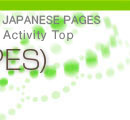
Top page > Water resources > Yahagigawa River Water Source Forest Environmental Forestation Agreement
•Year started : 2022
•Location : Water source area of Yahagigawa River on the northern slope of Mt. Chausu
•Actors : Anjo City, Aichi Prefecture and Neba Village, Shimoina County, Nagano Prefecture
The Yahagigawa River is located on the Pacific Ocean side of the central Tokai region. The 118-kilometer river runs through Nagano, Gifu, and Aichi prefectures and drains into Mikawa Bay. The watershed area is over 1,800 square kilometers, with two villages in Nagano Prefecture and two cities in Gifu Prefecture upstream and seven municipalities in Aichi Prefecture midstream and downstream.
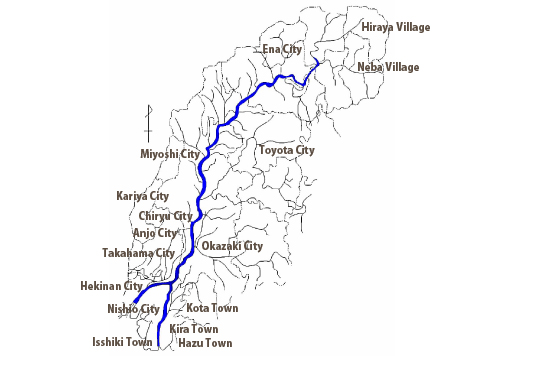
From the mid-1960s, the river became contaminated as a result of industrial discharge and golf course development in the upper basin area, therefore inflicting damage to rice crops and coastal fisheries and triggering a conflict of interests among upper and lower basin communities. In order to resolve these issues, in 1969, eighteen organizations, namely six agricultural organizations, seven fisheries organizations and five municipalities, downstream joined hands under the common slogan - one river basin, one destiny - to organize the Yahagigawa River Basin Water Quality Conservation Committee. Their campaigning resulted in a water basin management system guided by public initiative in which local administration is required to consult with the committee before implementing any development projects in the river basin. This method came to be known as the "Yahagigawa Method" and presented a model for other similar campaigns to follow[2].
Neba village, located in the uppermost part of Yahagigawa River, joined the Yahagigawa River Basin Water Quality Conservation Committee in 1979, after which Neba Village has lent land to Anjo City's Mt. Chausu Outdoor Recreation Center and has won the support of people from Anjo City in its "Furusasto-no-Mori Profit-Sharing Program[3]." Therefore, a good relationship was fostered between the two municipalities located at both ends of the river.
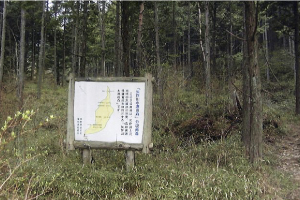
© Anjo City
In Neba Village, the local forestry office began planting forests for timber in the Taisho era[4]. In the mid-1950s, the forests were ready for cutting, and the local forestry office began to harvest the timber. Until the mid-1960s, in particular, the village prospered on timber profits of hundreds of millions of yen. However, the deregulation of wood imports in the 1960s caused wood prices to drop, and the village was no longer financially capable of restoring the land that would be returned to it after the forests were completely cleared. Furthermore, the disadvantages of tree felling, including the destruction of the landscape, avalanches and the degradation of water source areas, were also revealed, and immediate countermeasures were called for.
Neba Village decided to cancel future logging operations in 48.21 hectares of forest that had been scheduled to begin in 1991. However, the village could not convince the local forestry office to suspend its plans and finally decided to purchase the local forestry office's rights for 101.12 million yen in compensation for its share of prospective profits from selling Japanese cypress timber among others, in order to promote forest conservation plans to recharge water recharge and control erosion.
Neba Village asked Anjo City, with which it shared a long history of cooperation in watershed management, to jointly manage the forest, later named the "Yahagigawa River Water Source Forest," under a profit-sharing afforestation scheme[5]. Acknowledging the need to conserve the forests in the headwaters of the Yahagigawa River, Anjo City agreed and signed an agreement to purchase the rights of the local forestry agency. The profit-sharing afforestation agreement was the first contract of its kind to be concluded after the Forest Act was amended in 1991 to include the promotion of forest management agreements. The main elements of the agreement are provided below:
1) Anjo City will pay Neba Village a total of approximately 145 million yen to cover stumpage prices and rent.
2) Stumpage shall not be felled for thirty years (through March 31, 2022).
3) All forest management costs, including costs required for tree thinning are shared between the two municipalities. Any profits gained upon selling lumber are also divided.
The "Profit-Sharing Forest Development Agreement" ended on March, 2022, and the "Yahagigawa River Water Source Forest Environmental Forestation Agreement" was concluded in its place this April. The new agreement places greater importance on forest conservation and environmental education activities. Its targets and provisions include:
1. to protect water sources and nurturing forests2. to be continuously engaged in such protective work
3. to take custody over the money paid under the previous agreement
4. to reduce of project expenses by half
5. to divide the income derived from project into half
The purpose of the Environmental Forestation Agreement is not only to "protect water sources and nurture forests" but also to "give back to residents" and "contribute to and raise awareness of the SDGs".
To achieve these goals, we will focus on converting the current artificial coniferous forests to "mixed forests" where conifers and broadleaf trees may both be found.
Participating in this endeavor together gives us all an opportunity to learn about the importance of water and forests, and promote environmental activities to nurture the same desire among the members of the next generation.

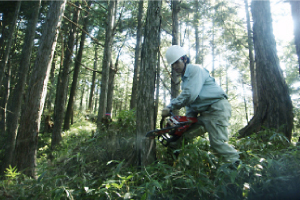
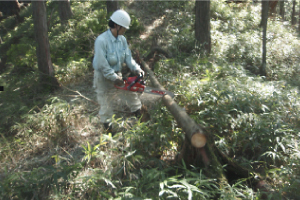
© Anjo City
[1] River basin area refers to all land surfaces from which rainfall is drained into a river system and is separated from adjacent basins by a drainage divide.
[2] The Yahagigawa Basin Water Quality Conservation Committee established the Yahagigawa Basin Exchange Promotion Organization for the purpose of coexistence in the Yahagigawa river basin and regional development in 1991. In 1978, Aichi Prefecture and twenty municipalities in the prefecture established the Yahagigawa River Water Source Fund, which is operated on interest on a fund of 585 million yen comprising contributions from each local government and annual contributions totaling 40 million yen. The fund grants financial support to municipalities undertaking water source management projects, research and exchange programs, in the Yahagigawa river system.
[3] A program to plant a forest mainly of hinoki cypress on 10 hectares of land offering 150 shares of profit at 600 thousand yen per share. Under the program, after thirty years, the village and the membership, collectively, would be entitled to 50 percent of profits, respectively.
[4] 1911-1925
[5] A scheme under which forest owners, parties planting and managing the forest and parties assuming the management costs conclude a two-way or three-way contract in which a forest is planted, managed and felled, after which profits are shared among the parties.
[6] An equivalent of land rent for approximately 48 hectares of land for 30 years. By paying the land rent, Anjo City gained superficies on the land.
•References
·Ginga Shobo ed. (1994) Suigen no Mori ha Toshi no Mori, Tokyo:Ginga Shobo
•Special thanks to
Anjo City (Finance Division, General Administration Department)

